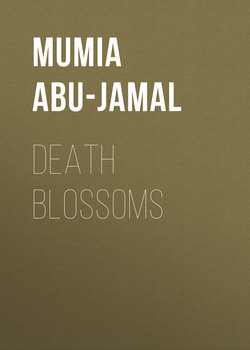Читать книгу Death Blossoms - Mumia Abu-Jamal - Страница 7
На сайте Литреса книга снята с продажи.
ОглавлениеPREFACE TO THE 2020 EDITION
Mumia Abu-Jamal
Imagine knowing that you will soon die.
Imagine not only knowing the exact date your life will end, but that you will die an unnatural death.
Imagine knowing that you will be deliberately killed by the authorities of the state in which you live.
Imagine, if you can, that you were shot by police, arrested, tortured, jailed, and sentenced to be executed as a result of court proceedings that Amnesty International declared were “in violation of minimum international standards that govern fair trial procedures and the use of the death penalty.”
Imagine spending your last days alone inside a small prison cell in a hellish place called death row.
What would you think about as the clock ticked down on you?
What would you dream?
What would you hope?
How would you make sense of the things you heard, saw, and felt as the date of your execution neared?
To read this book, one of my first literary endeavors, a generation after its tumultuous birth, is to experience the smells of fear, trepidation, and the genuine threat of execution that I lived with as a forced inhabitant of Pennsylvania’s death row.
But against the canvas of unfreedom, death, and barbarity portrayed in the pages ahead, aspects of our humanity blossom into relief. Such is the intention of this book. For Death Blossoms is, above all, a meditation on the faith of the oppressed.
Such faith may take many forms, but all are shaped and informed by resilience against oppression. It thus utilizes the voices, dreams, and poetics of the oppressed to imagine freedom. To understand that faith, we swim to the lowest depths of society and find, to our surprise, the beating of a multitude of hearts—the cris de cœur—of those sentenced to the nothingness of death row in all its awfulness and all its awesomeness.
Who can forget the voices of those so consigned—people who sit for decades awaiting the state’s siren song to call them to surrender their last breath to the Grim Reaper? It is a forbidding task. A work of venturing to that City of Sighs that should, with a certain cruel justification, bear a legend etched into stone worthy of the inscription in the arch over Dante’s Gate of Hell: “Lasciate ogne speranza, voi ch’intrate”—“Abandon all hope, ye who enter here.”
It has been many long years and almost ten books since I lived in the crisp white pages of Death Blossoms. Around that time, I had come within thirteen days of an execution date, and would soon be given another exact date to die. I handwrote the pages of this book on three-ring-binder paper after meeting members of a remarkable group called the Bruderhof, a community located in the highlands of western Pennsylvania dedicated to the vision that “another life is possible”—a “love your neighbor, share everything” life “where there are no rich or poor. Where everyone is cared for, everyone belongs, and everyone can contribute.” The Bruderhof were, as refugees from Hitler’s Germany, anti-fascist, anti-racist, and deeply opposed to the death penalty. I found them intriguing. We conversed together about their ideas, and out of those conversations—and the sense that I might soon be killed by the state—grew Death Blossoms.
Much has changed since that moment in time; but woefully, much has also remained the same. As of January 2019, 2,664 souls still languish on death row in the United States, 145 of them in Pennsylvania.
Over the years, some who were sentenced to die have made the leap across the moat into real life: Freedom. Most of those have done well, but all have nightmares of their years on death row: its cacophony, its rank smells, its bits of sheer madness, its ever-present threat of violence.
As I write these words, a lawsuit is making its way through the tunnels of the Pennsylvania judiciary seeking the abolition of the House of Death. But as it is now, more than 140 souls still languish in the twilight of death row. One man—Sug—was forced to wait eleven years—eleven years!—for a retrial. When it finally took place, the district attorney continued to argue for Sug’s execution, but a Philadelphia jury refused to send him back to the Row.
Thus, the stories that originally populated the pages of Death Blossoms continue to bloom in dark, dank places. Souls weep, souls spin, souls creep fitfully toward the light. Souls sing, souls keen, and souls soar toward their highest and best selves, despite the obscenity of death row and its political architects.
Death row may have shrunken in size, but it hasn’t lost its social and political significance. Politicians continue to play the Game of Fear that allows them to construct more ways to exercise state terror against the wretched of the earth.
But a new wind may be blowing through the air; the cries of groups like Black Lives Matter and its spirited affiliates nationwide have burst open doors once chained and cemented closed.
Young people, bold as life, have identified these sites of state terror and are calling for their abolition. They have already run repressive district attorneys out of office in a half dozen cities across America.
May this work, now reaching its third life, give fuel and heft to their noble efforts, for only social movements truly change history.
From Life Row,
Mumia Abu-Jamal
Autumn 2019
